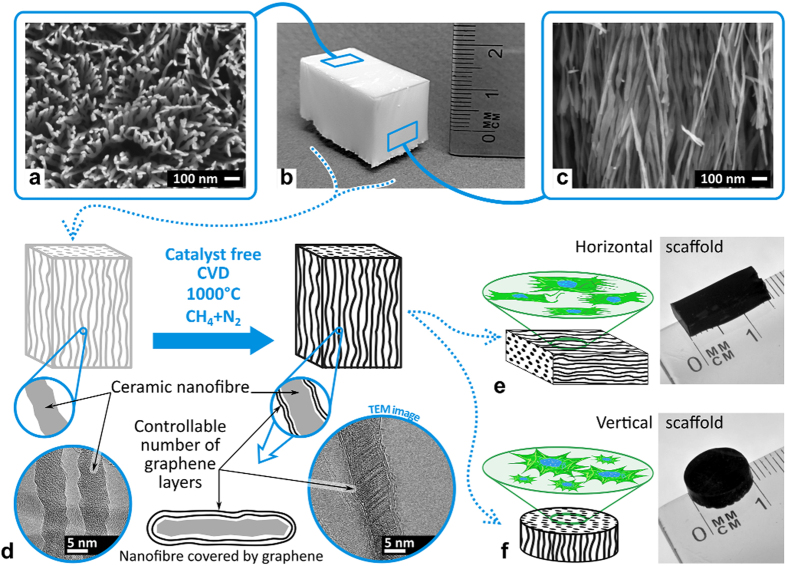Figure 1.
(a–c) The images of the graphene-augmented inorganic nanofibres (GAIN) network: (a) the top view (SEM) of GAIN revealing high porosity; (b) the network of the highly oriented nanofibres held together by weak hydrogen bonding; (c) the side view (SEM) of GAIN showing alignment of the fibres. (d) The schematic of the process of a single-step catalyst-free CVD of controllable number of “in-situ” self-assembly of graphene layers onto the surface of fibres using CH4 gas as a source of carbon. (e) The GAIN scaffold with horizontally oriented fibres allowing directional orientation (estimated tangential compressive elastic modulus 200–400 GPa along the fibres and ~1–5 kPa across the nanofibres network) and altering morphology of different types of cells. (f) The GAIN scaffold with vertically oriented fibres allowing development of mixed tumour in vitro models 2D/3D configurations for inductive and conductive features, accomplish the selective propagation of tumour cells.

